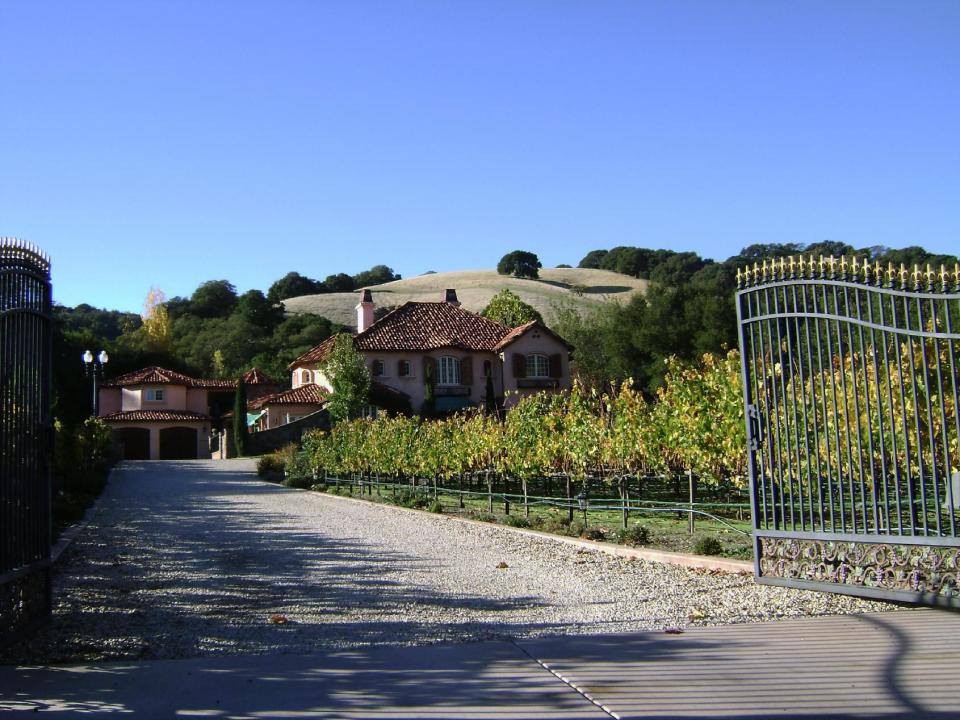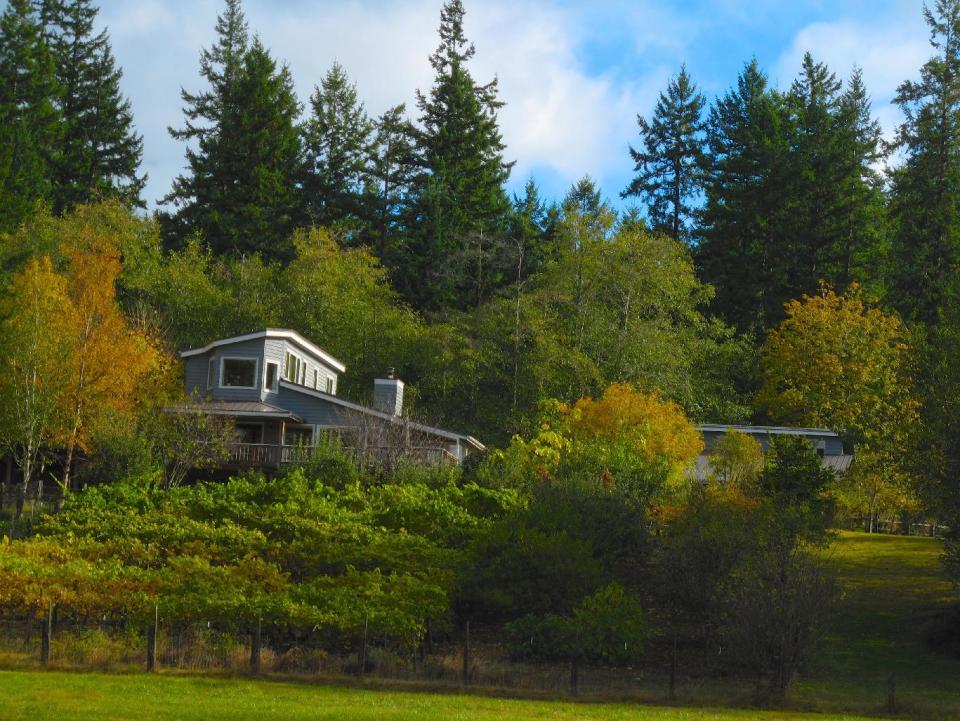Backyard vintners do it for fun, profit, lifestyle
Growing gapes can be a rewarding pursuit. They're appealing to the eye, pleasing to the palate, a profitable sideline, and a reason for parties and neighborhood togetherness. Small wonder so many vineyards are cropping up in people's yards.
"The idea of having a landscape that produces something is one of the attractive issues," said Tom Powers, a winemaker who has designed and installed more than 100 small vineyards, mainly around the Alhambra Valley of Contra Costa County, Calif., near where he lives. "The other thing is the lifestyle of being in wine country is attractive to people and they want to be a part of it."
Property owners often install vineyards when renovating unsightly or underutilized land, said Powers, author of "The Organic Backyard Vineyard" (Timber Press, 2012).
"It's less expensive to do grapes than traditional landscaping like shrubs and flowers from an investment viewpoint," he said. "The trade-out is that you have to put in more maintenance time."
Make no mistake: Vineyards require attention. Rootstocks must be chosen, the soil prepared, trellises and fences built, vines pruned, canopy leaves thinned, nets strung to discourage predators, grape clusters harvested and processed.But the work can be worth it economically. Grape growers from New York to California profit by selling their crops to hobbyists or to wineries that don't have enough tonnage to meet production demands. Other growers, including those who grow table grapes, enjoy exceptional flavors from fruit seldom found in markets.
The small acreage required for a vineyard can generate surprisingly high earnings. "Up to $3,000 to $7,000 per acre in gross returns," according to the Upper Shore Regional Council in Chestertown, Md.
Grapes also are a smart environmental choice given their modest water and fertilizer requirements, plus low soil runoff, the council said.
It doesn't take many vines to start a rewarding grape-growing venture.
"A 100-foot row of vines can yield up to 175 bottles of wine," Powers said. "With a one-acre vineyard, you could make more than 5,000 bottles."
A mild climate is not required for growing grapes. Many varieties can be grown anywhere there is an ample amount of sun and an abundance of nutrient-rich, well-drained soil. Grape-growing regions in the United States include Virginia, upper New York, southern Illinois, and extensively in California, Oregon and Washington. Many other small pockets lay elsewhere.
"It's a difficult thing to do if you live in an area where spring weather is wet for many weeks," said Gary Gao, a small fruit specialist with Ohio State University. "In Ohio, springs are so wet that you can get all kinds of fungal diseases."
Vineyard design varies greatly, but must accommodate climate and lay of the land.
"You try to match the personality of the place," Powers said. "The vineyard becomes the centerpiece of the spot you're landscaping."
Powers, for instance, built his home toward the back of the property and planted the vines up front.
"You have to drive through the vineyard to get to it (the house)," he said. "When I built one for a neighbor, we were able to wrap it around his house. It visually fit in with the house, and then we laid a trail so people could stroll through and see how they (grapes) were doing. It also incorporates a small lawn for parties."
Margot and Mario Corona live on a "very generous size lot" near Martinez, Calif. Much of their hillside property was undeveloped when they purchased it, giving them a variety of landscaping options.
"We're not in a neighborhood where we're allowed to have animals," Margot Corona said. "We didn't want some complicated landscaping. So we bought hundreds of vines — some 650 plants. With an acre of land under cultivation, it turned out to be much more than a hobby."
"It became a binding factor in the circle of friends we have," she said. "Their culture is Italian and they're used to making wines. We were already good friends, and it surged and brought us even closer together."
Many growers make wine from their own grapes and get together on weekends to pick the crop, Powers said.
"After they get them to a winery, and later, when the wine is finished, they bottle it and have a barbeque," he said. "Often it's like a competition. It's a very social thing."
John and Linda Goetz have 934 vines on an acre of land surrounding their home near Martinez. They hire professionals to handle the work.
"They prune in the winter, trellis and keep the weeds down, thin and trim the vines, and spray and fertilize as necessary," John Goetz said. "They also harvest the grapes for me and deliver them to the winery."
Goetz underwrites some of the costs for making the wine and splits the bottled output with the winemaker.
"We do not sell any of the wine, at least not yet," he said. "That's a very complicated process of approvals and compliances that I am not going to pursue."
Bill Barley, from Alamo, Calif., found great pleasure in the roadside appeal of his vineyard. "I liked looking over the vineyard," he said. "I liked watching them grow."
Vines are picturesque even in winter, Barley said.
"Everybody in the neighborhood was pleased. Rather than looking at rocks and dirt, they were looking at this beautiful vineyard."
The vines also paid their way when it came time for him to sell, he said.
"It was a nice vista. The new owners liked the property because it had the vineyard."



